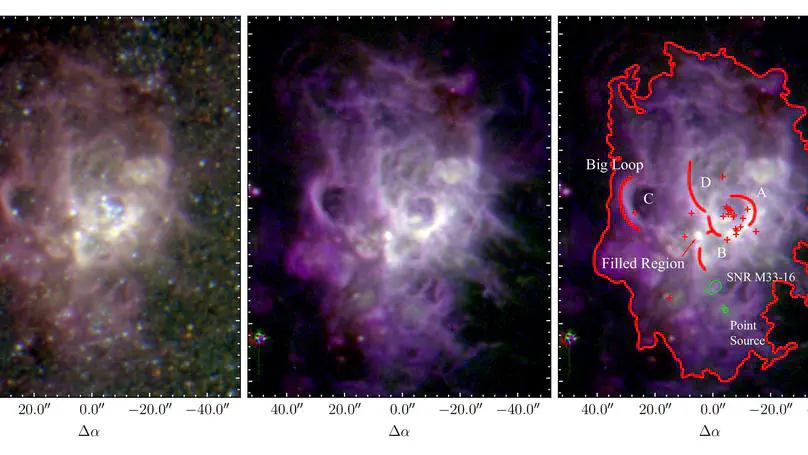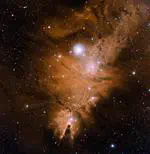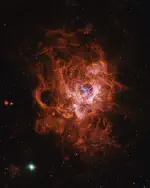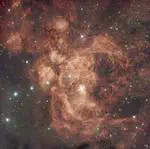Biography
Hello! My name is Ray Garner and I am a postdoc in the Astronomy Group at Texas A&M University in College Station, Texas. I am working with Dr. Rob Kennicutt on the Star formation, Ionized Gas, and Nebular Abundances Legacy Survey (SIGNALS), a survey of HII regions across ~35 galaxies. You can check out the survey paper here.
Before I arrived in College Station, I was a graduate student at Case Western Reserve University in Cleveland, Ohio working with Prof. Chris Mihos on a detailed analysis of the Pinwheel Galaxy (M101) and its small satellite group using the deep, wide-field, narrowband imaging capabilities of the Burrell Schmidt 24/36-inch telescope.
Briefly, my thesis utilizes narrowband images of Hα, Hβ, [OIII]λλ4959,5007, and [OII]λλ3726,3729. These images allowed me to search the entire M101 Group for outlying, intragroup star-forming regions (finding none), measure the oxygen abundance gradient of M101 (suggesting a broken gradient at
Before attending CWRU, I was a student at Furman University in Greenville, South Carolina where I graduated with a B.S. in Physics, Summa Cum Laude. While there, I completed research in general relativity with Dr. Bill Baker (ret.). During the summer of 2017, I attended a Research Experience for Undergraduates (REU) at Indiana University in Bloomington, Indiana. There, I worked on ionized gas kinematics of nearby, low-mass galaxies with the late Dr. Liese van Zee.
- Galaxy evolution
- Star formation
- Nebular diagnostics
- Spiral structure
PhD in Astronomy, 2023
Case Western Reserve University
BS in Physics, 2018
Furman University
Featured Publications

Observing giant HII regions at fine spatial scales uncovers detailed structures and reveals variations in ionization, abundance, and dynamical properties of ionized gas and the effect of stellar feedback. Using emission line data of M33 observed with SITELLE as part of the Star-formation, Ionized Gas, and Nebular Abundances Legacy Survey (SIGNALS), we present maps of the principal optical emission line ratios for NGC 604, the most luminous HII region in M33. The excitation maps align well with the Hα morphology and are clearly related to the location of the central stellar cluster and secondary stellar groups. The maps of ionization-sensitive line ratios show substantial variations across the face of NGC 604. We demonstrate that these variations are unlikely to be due to chemical inhomogeneities but are primarily caused by changes in ionization, which in turn affect the observed line ratios. We present the Hα kinematics of the region and connect it to the excitation structure, showing how the dynamic motions influence the spatial distribution of ionized gas. We note two distinct sources identified in these excitation maps: a known supernova remnant and an unknown point source. Such parsec-scale features contribute only a small percentage to the overall light and would remain undetected without the use of high-resolution spatial data. Throughout the paper, we make comparisons to and raise concerns about single-aperture and long-slit spectroscopic measurements of giant HII regions, highlighting the limitations and potential inaccuracies of such methods.
Recent Publications
Recent & Upcoming Talks
Contact
- ray.garner at tamu.edu
- 4242 TAMU, College Station, TX 77843





